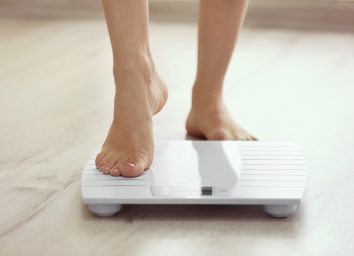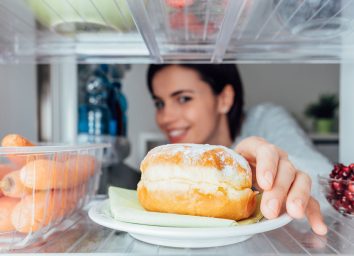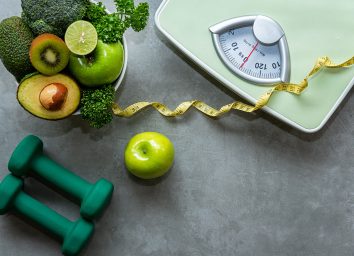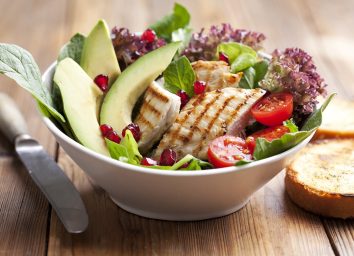15 Ways To Lose Weight Without Dieting
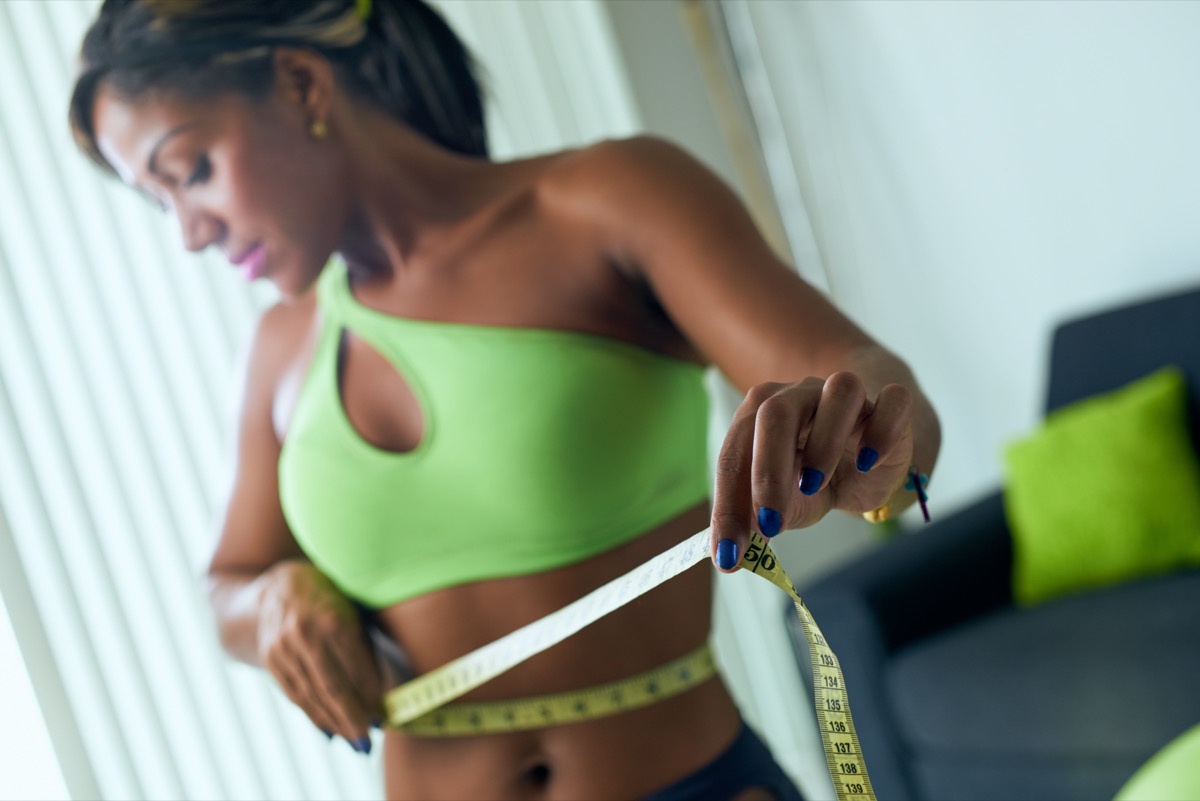
Keto, plant-based, cabbage soup. There’s enough diets vying for your attention to make your head spin. But what if we told you could watch the number on the scale drop without them? Yep.
“It is totally possible to lose weight without dieting,” says Jessica Cording, MS, RD, CDN, author of The Little Book of Game-Changers. In fact, in her experience, people who implement a few lifestyle changes are far more successful at losing weight—and keeping it off—than folks who try weight loss diets.
To keep it simple for you, we rounded up nutritionist-approved, easy-peasy, no-diet-required weight loss tips. Wherever you are in your weight loss journey, implementing just one or two of them into your routine will reap major reward. Don’t forget to sign up for our newsletter to get the latest nutrition and weight loss news delivered straight to your inbox.
Pop a probiotic supplement

“Probiotic supplements are not a magic bullet or quick fix for weight loss,” says Dr. Josh Axe, D.N.M., C.N.S., D.C., founder of Ancient Nutrition and DrAxe.com, author of the best-selling books KETO DIET. “But they can support nutrient absorption, healthy bowel function, and healthy inflammation levels, all of which support weight loss.” Makes sense! Here are 5 Surprising Benefits of Consuming Probiotics.
Eat more fermented foods
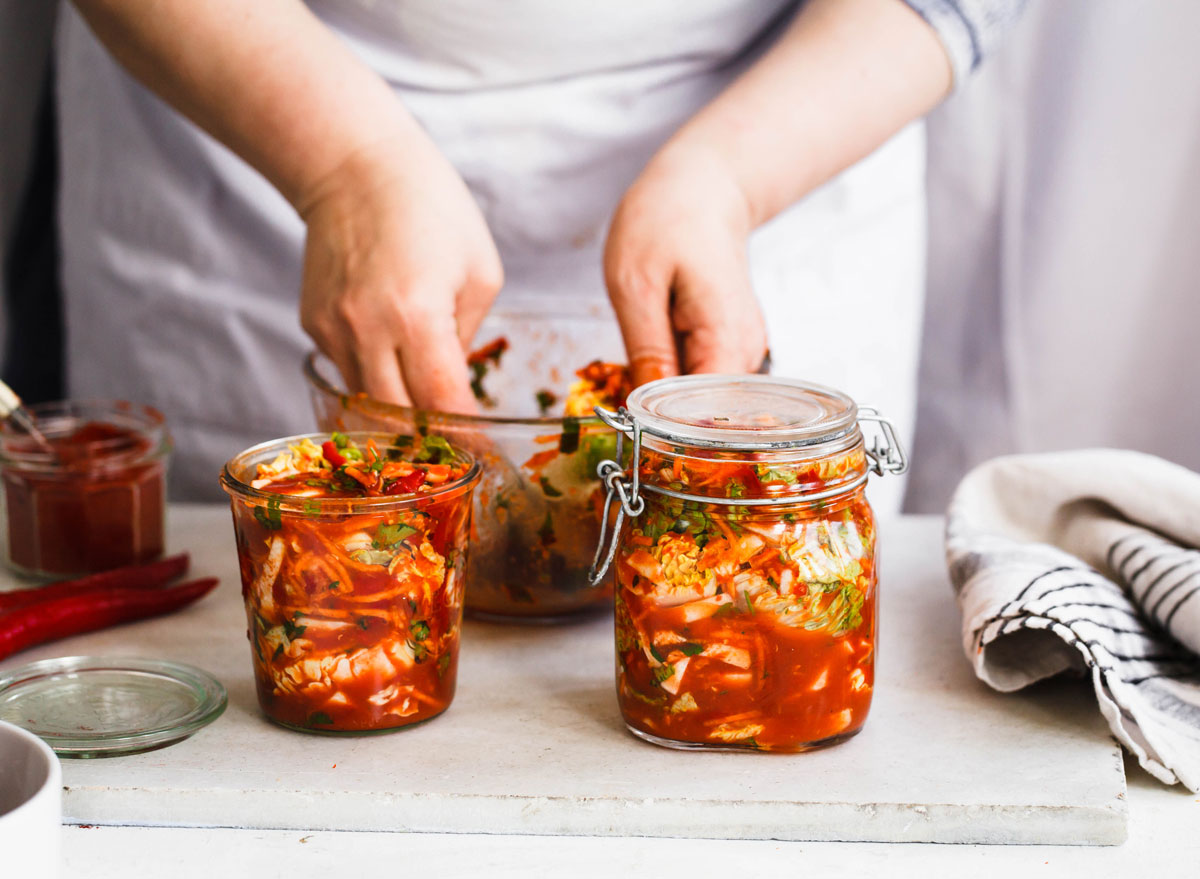
Supplements aren’t the only way to meet your probiotic needs. “Fermented foods naturally contain the gut-healthy bacteria,” says Dr. Axe. Eating a serving (or two) of sauerkraut, kimchi, tempeh, or Kefir per day can help you get those same gut-health and weight-loss benefits. Check out these 14 Fermented Foods to Fit Into Your Diet.
Don’t forgo fiber
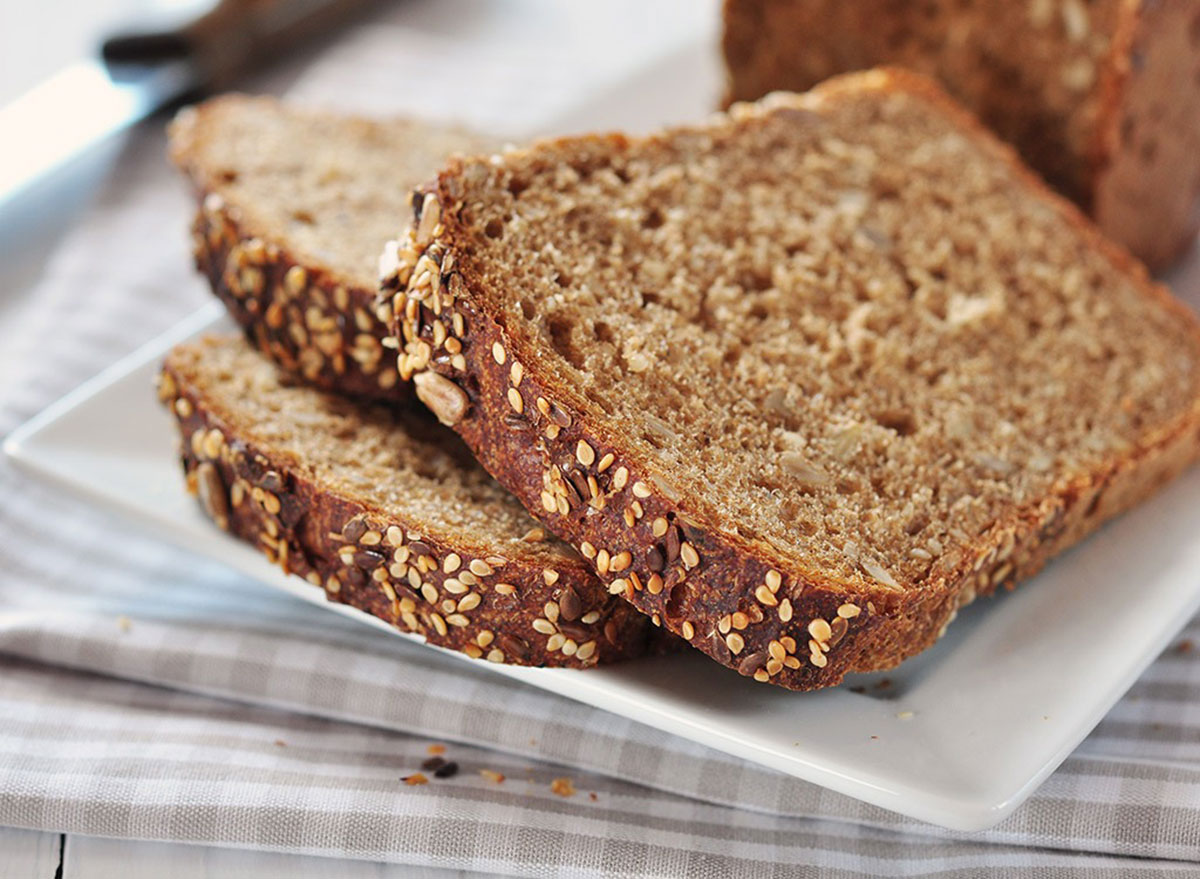
Occasionally, Cording recommends folks who don’t want to count their daily fiber intake count their calories. Why? Because fiber literally expands in your stomach (woah!), helping you feel full and for longer, she explains.
“Prioritizing fiber-rich foods is just another way to avoid fast-digesting, nutrient-poor foods,” she says. While this strategy is no good for folks with a history of disordered eating, prioritizing high-fiber sources like whole grains, whole (not dry or juices) fruit, vegetables, avocado, and chia seeds is a solid plan for all. Try these 25 Best High-Fiber Snacks to Buy That Keep You Full.
Focus on fats
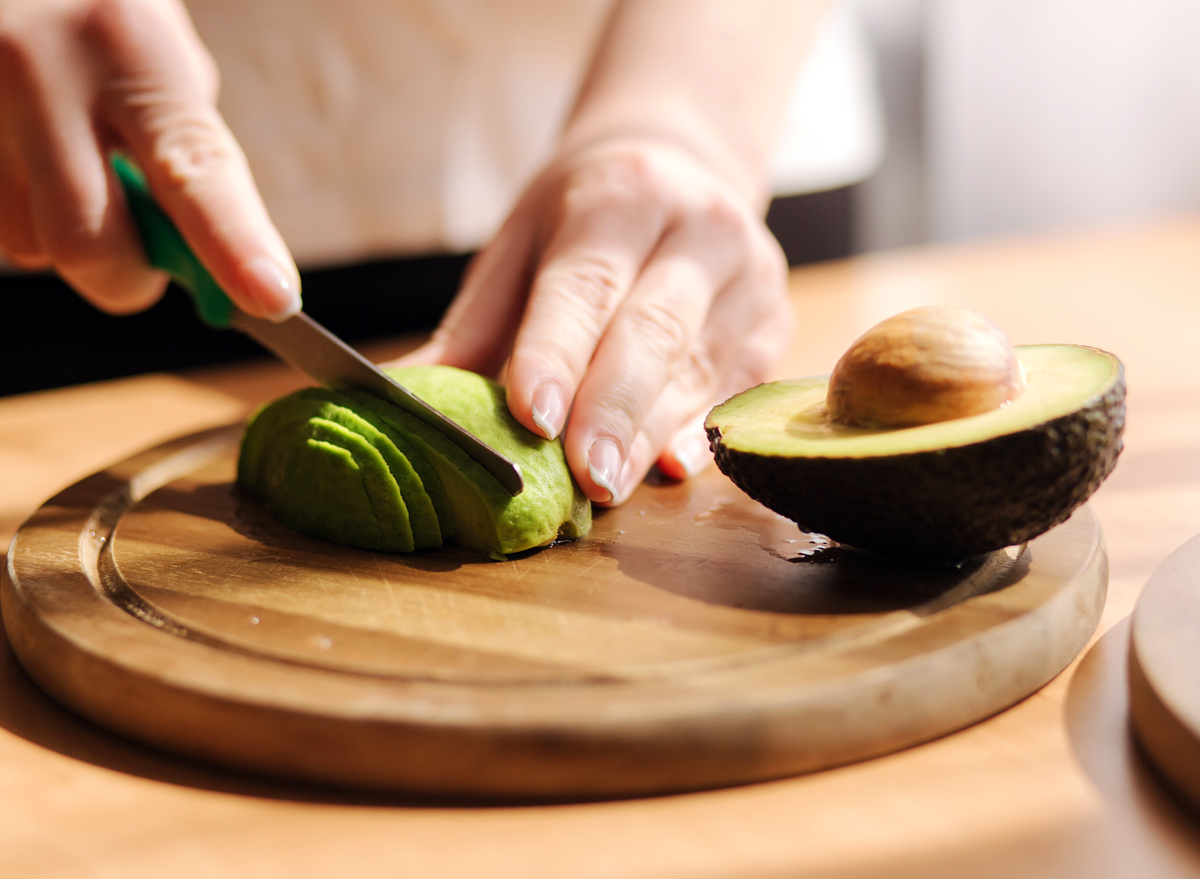
Really! In addition to being slow digesting, healthy fats like avocado, oil olive, nuts and seeds, cashews, chia seeds, ground flax seeds also tend to be super flavorful, says Cording. “[Health fats] are super satisfying, which comes in handy when you’re trying to snack less.” What’s more, many healthy fats also contain omega-3 fatty acids which fight inflammation-causing free radicals. Try these 20 Healthy Fats to Make You Thin.
Track your fruit and veggie intake
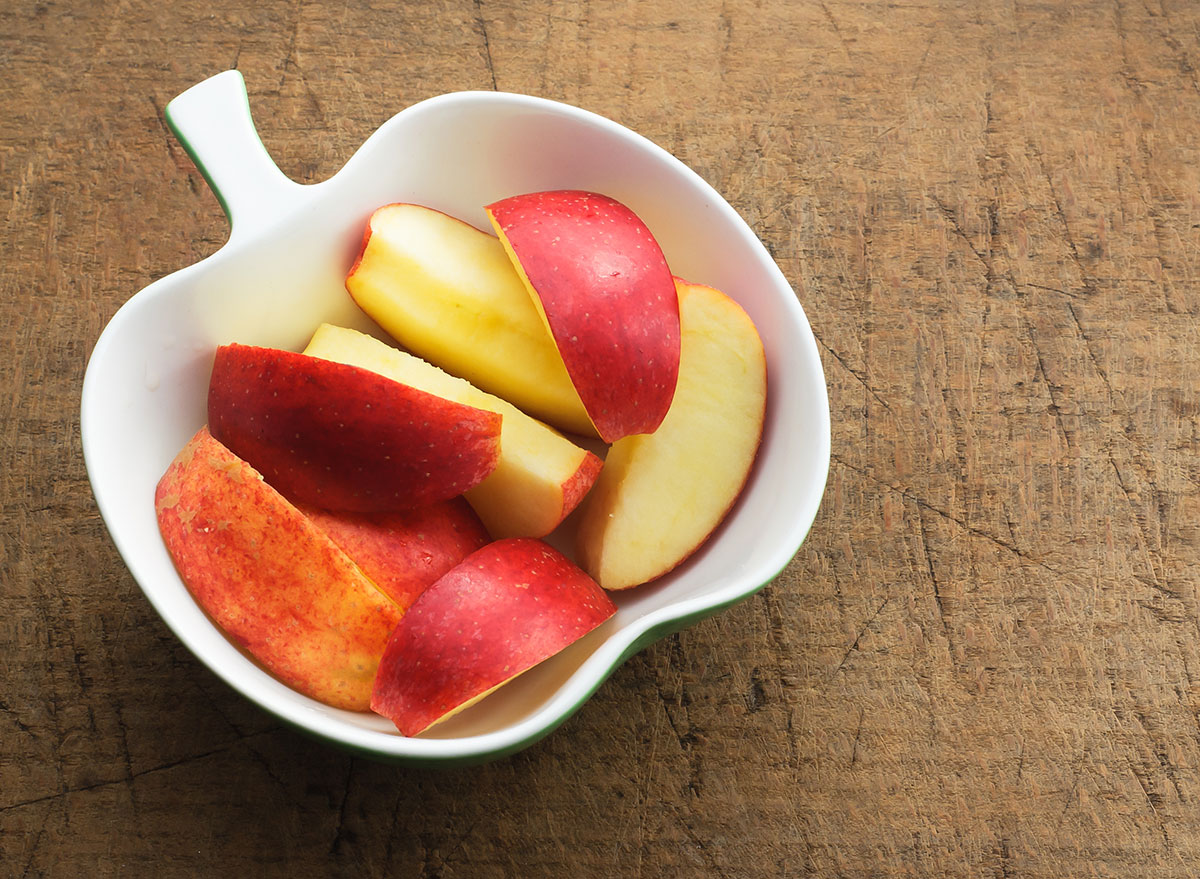
We’ve long been told to eat as many fruits and veggies as possible per day. The official recommendation is for adults to have 2 cups of fruit and 3 cups of vegetables per day. “One cup of fruit is about equivalent to one fruit or vegetable,” says Jonathan Valdez, R.D.N., owner of Genki Nutrition and a spokesperson for the New York State Academy of Nutrition and Dietetic. “So, a large banana, small apple, medium pear, a large pepper, or a large tomato all qualify as a cup.”
Fam, that’s not thatttt many fruits and veggies. So if you’re short-changing your intake and trying to lose weight? Quit it! “Fruits and vegetables support weight loss because they are nutrient-dense and have lots of fiber that maximizes satiety while intaking lower calories,” he says. “Eating fruits and vegetables will also mean you’re likely not eating other, possibly more high-calorie foods.”
Boost your water intake
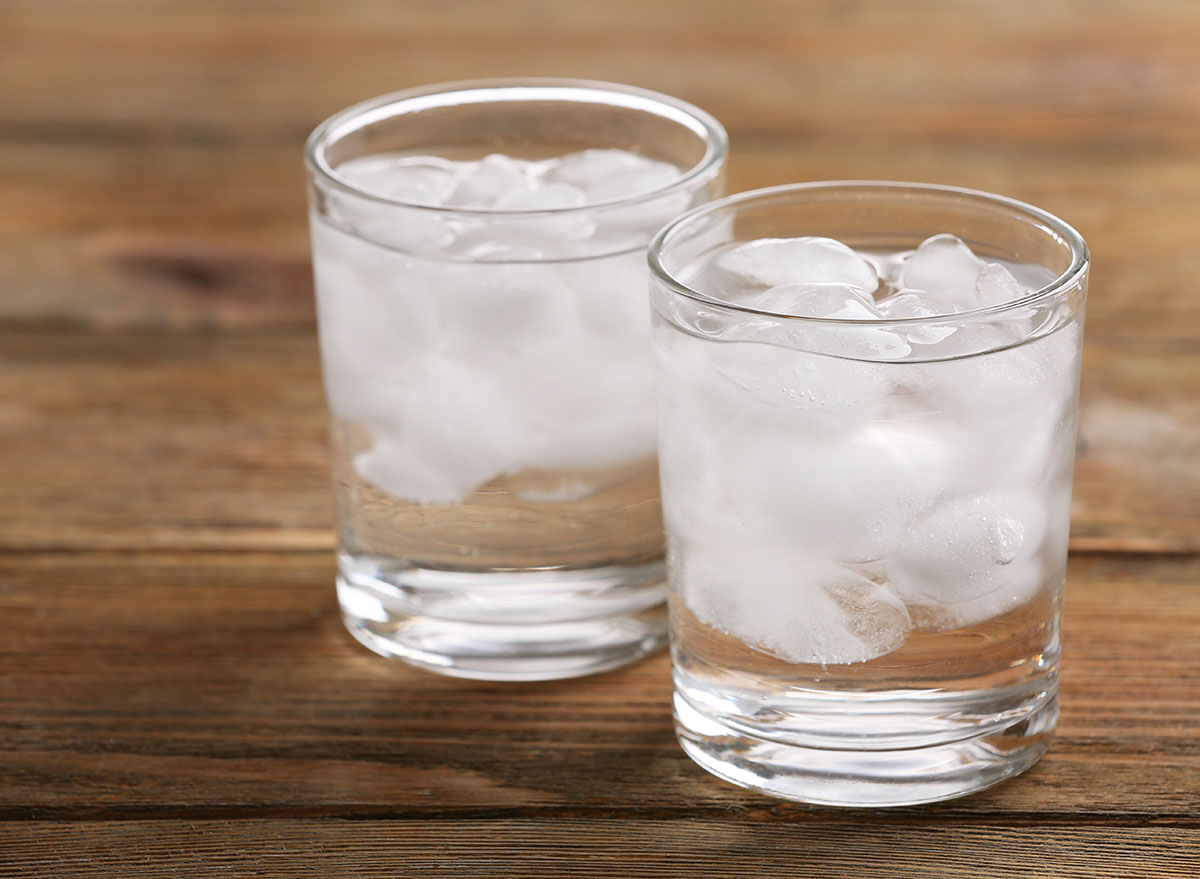
Hands up if you drink more water per than any other beverages (yes, including coffee). Hand still on the mouse? Boosting your water intake could support healthy weight loss and maintenance. Dr. Axe explains: “If water isn’t your number one beverage, odds are you’re consuming a number of sugary, high-calorie drinks per day.” Subbing these other beverages (think: orange juice, beer soda) to water “is one of the easiest ways to cut down on sugar intake, improve your diet and lose excess body weight,” he says. Here’s What Happens to Your Body When You Stop Drinking Water
Give your morning joe a makeover
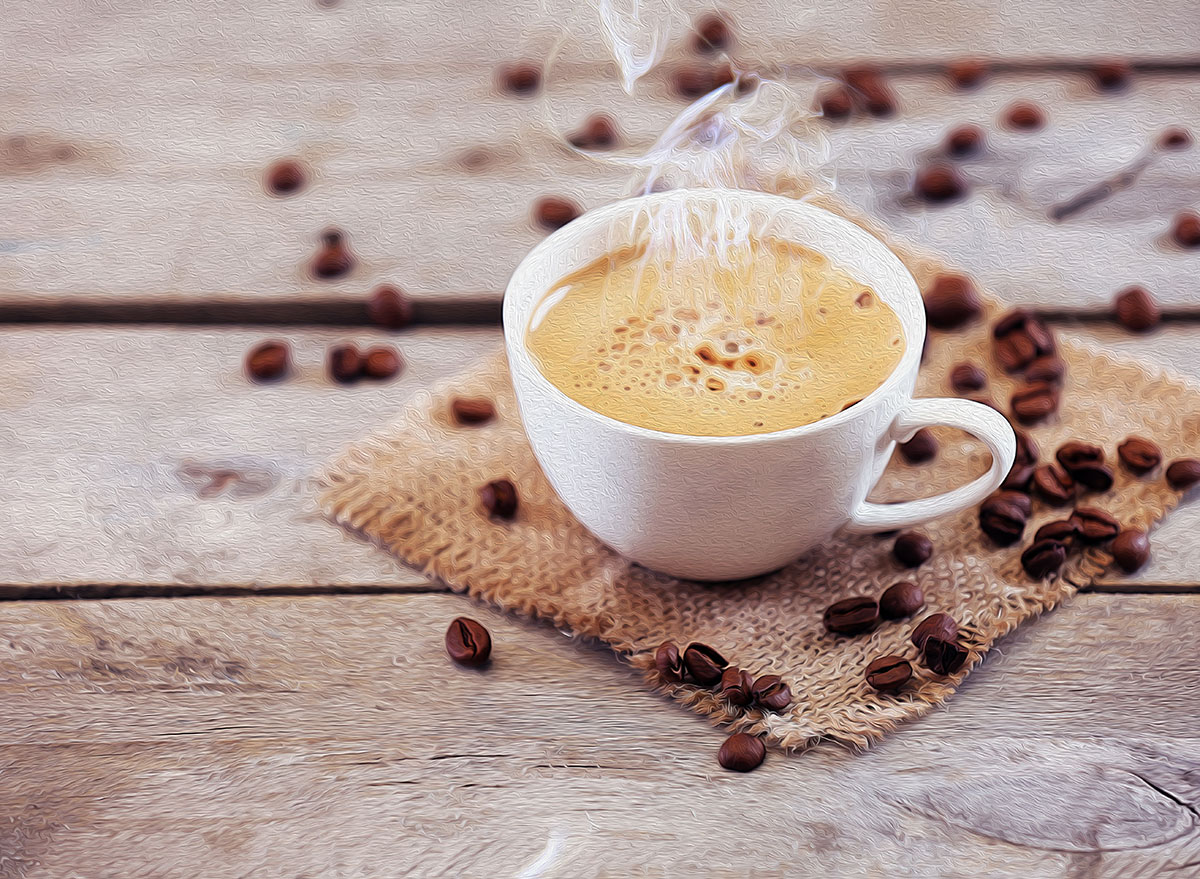
While we’re on the topic of sugary beverages, Lisa Richards CNC, nutritionist and founder of The Candida Diet, says you might be surprised just how much sugar is lurching in your cup of joe. “Adding sugar, sweeteners, and high fat/calorie sweeteners can result in coffee that provides upwards of 200 calories in just one cup,” she says. And face it: Most people drink upwards of three cups per day. 600 calories per day in coffee? Yikes
Her recommendation? Measure out exactly how much creamer and sweetener you’re putting in each cup so you have a true sense of how much sugar you’re actually getting per cup. Or, consider giving your morning drink a makeover, altogether. “What you put in your coffee can pack on the pounds, but the opposite is true as well. What you put in your coffee can also help boost your weight loss,” she says. Cinnamon, for instance, is a great alternative to sweeteners because “it is a natural appetite suppressant and also boosts metabolism.”
Sub soda for seltzer
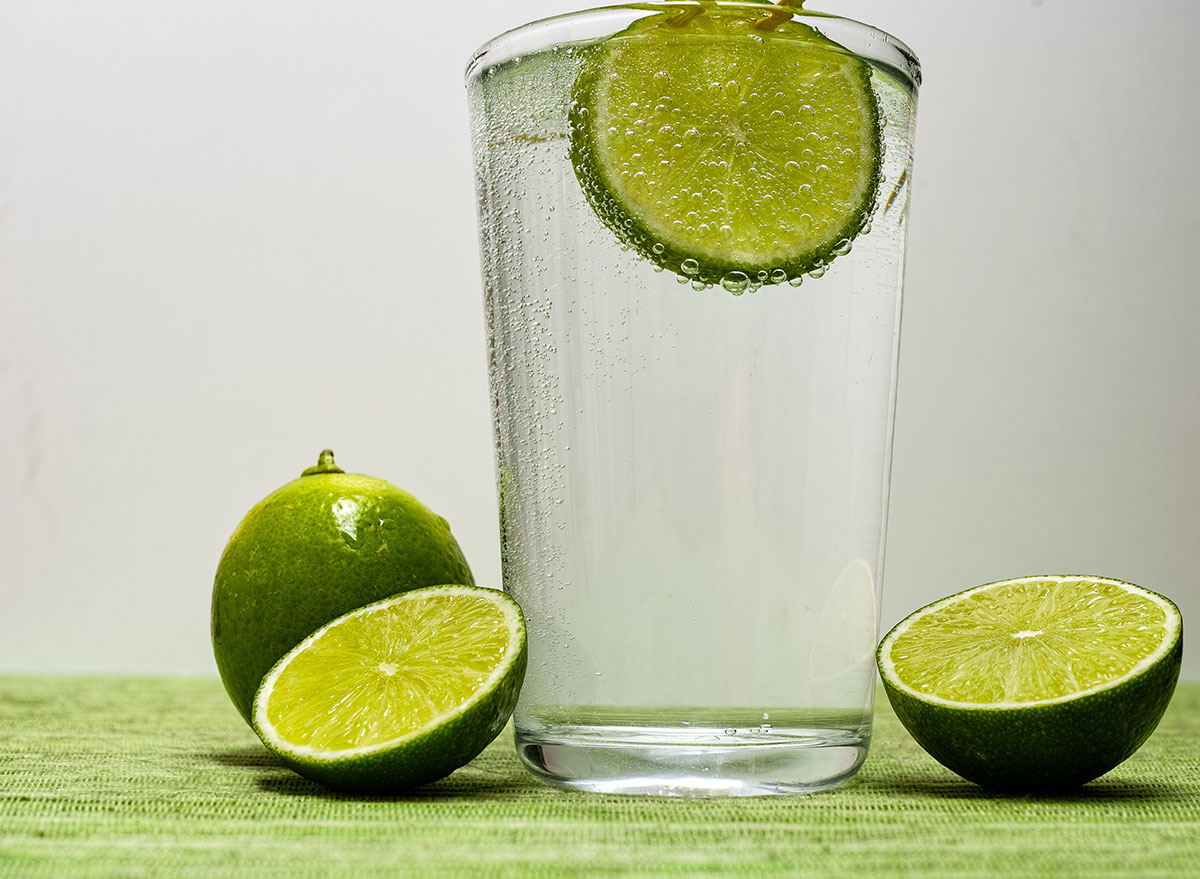
You know this: soda is loaded with sugar. “A can of soda can have about up to 40 grams of added sugar,” says Valdez. Meaning, in a single can you’re already more than the 2015-2020 Dietary Guidelines for Americans recommendation that women keep their sugar-intake under 25 grams per day, while men keep it under 30 grams.
If it’s the bubbles you crave he recommends making your next six-pack cans of seltzer. “Seltzer water is much better than soda because it is just carbonated water and usually has no sugar.” If it’s the caffeine, Dr. Axe recommends a cup of (black) coffee, tea, matcha green tea, or green tea, “all of which may also keep your hunger in check.” Check out our list of 108 Most Popular Sodas Ranked by How Toxic They Are.
Cut back on refined carbs

No weight loss tip list would be complete without mention of refined carbs. “Refined carbohydrates are grains that have had most (if not all) of their fiber, vitamins, and minerals stripped from them in process,” says registered dietician Allie Lansman, RDN, LD, founder of The Freelance RD. Meaning, foods such as white pasta, white rice, white bread, cookies, and crackers have basically no nutritional value.
And, “without any fiber to keep you full, after eating refined carbs you’re going to get hungry again way sooner than if you had fibrous, nutrient-dense carbs,” she says. Enter: Whole grains, which have not been nutrient-zapped.
Replacing refined grains with whole grain products is an easy way to naturally cut calories and speed up metabolism, according to one study published in the American Journal of Clinical Nutrition. Your move: next time you’re in the pasta or bread aisle, reach for the whole grain option.
Eat off smaller plates
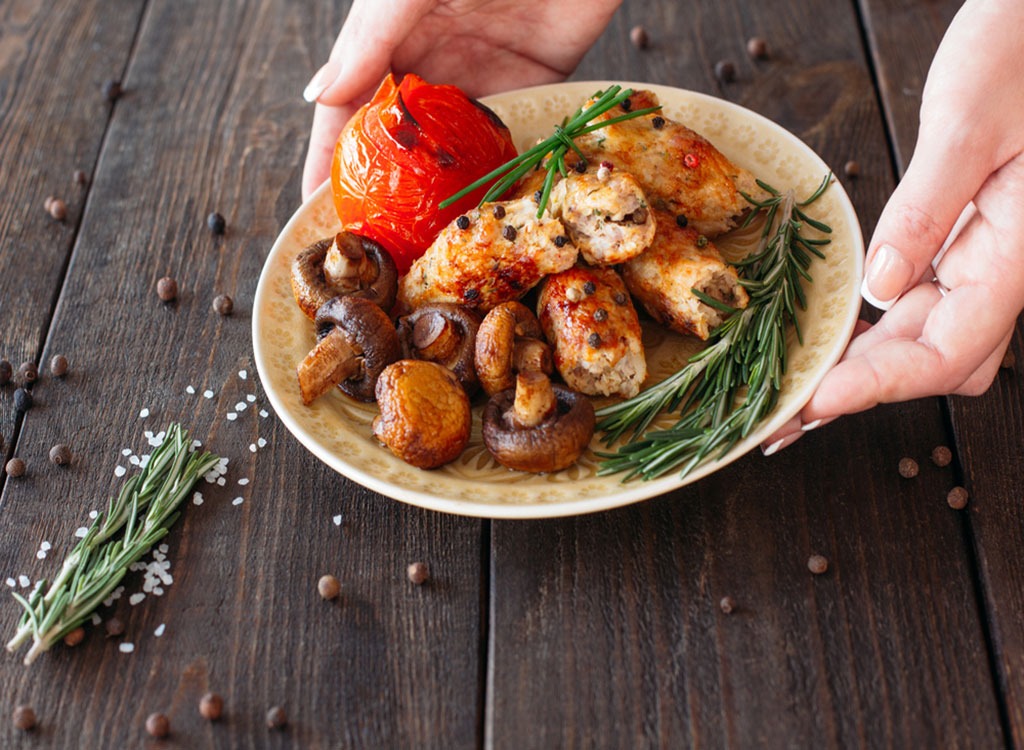
“Most people eat two or three servings per sitting,” says Richards. In part, this is because our plates are so stinking big, she says. “Sizing down your plates can increase the chances that you are filling your plate with accurate serving sizes,” she says.
Of course, this hack still requires discipline. Eating on small plates won’t yield weight loss if you’re going up for second and third helpings.
Learn your hunger cues
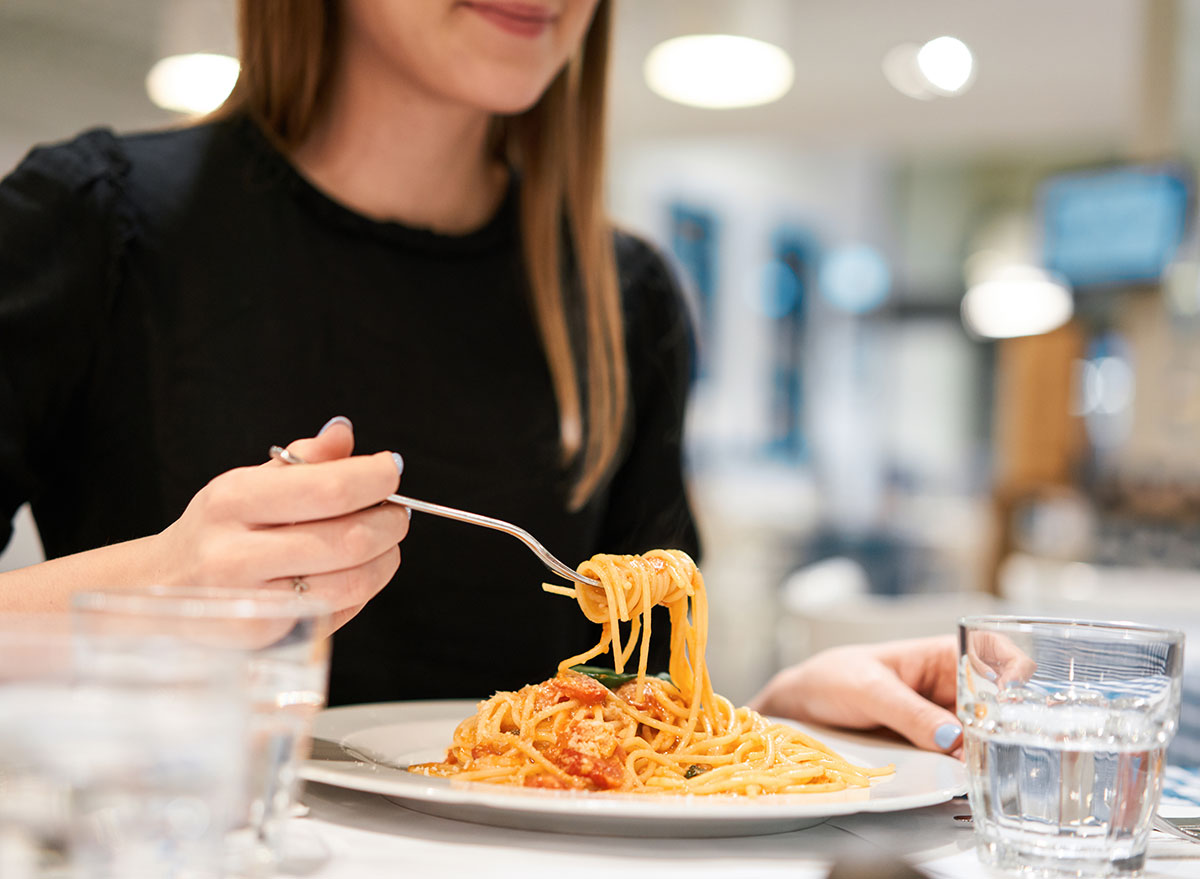
It sounds so simple: Eat when you’re hungry, stop when you’re full. “But for people who are used to rushing their meals or eating in front of the TV it can actually feel really awkward to pay attention to your internal hunger cues,” says Cording.
So, how do you learn your internal hunger cues? She recommends leaning on something called the hunger-fullness one to ten scale. “One means you just had a heavy holiday meal, and ten is so hungry you want to dissolve in a puddle on the floor,” she says. After a meal you want to be about a three, and at around a seven or eight it’s time to eat. “The scale makes most people realize how often they snack because they’re bored or tired, and not because they’re actually hungry.” And if you feel like there may be other reasons besides hunger for your eating, check out these 5 Ways to Quit Emotional Eating for Good.
Set aside 30 minutes to eat
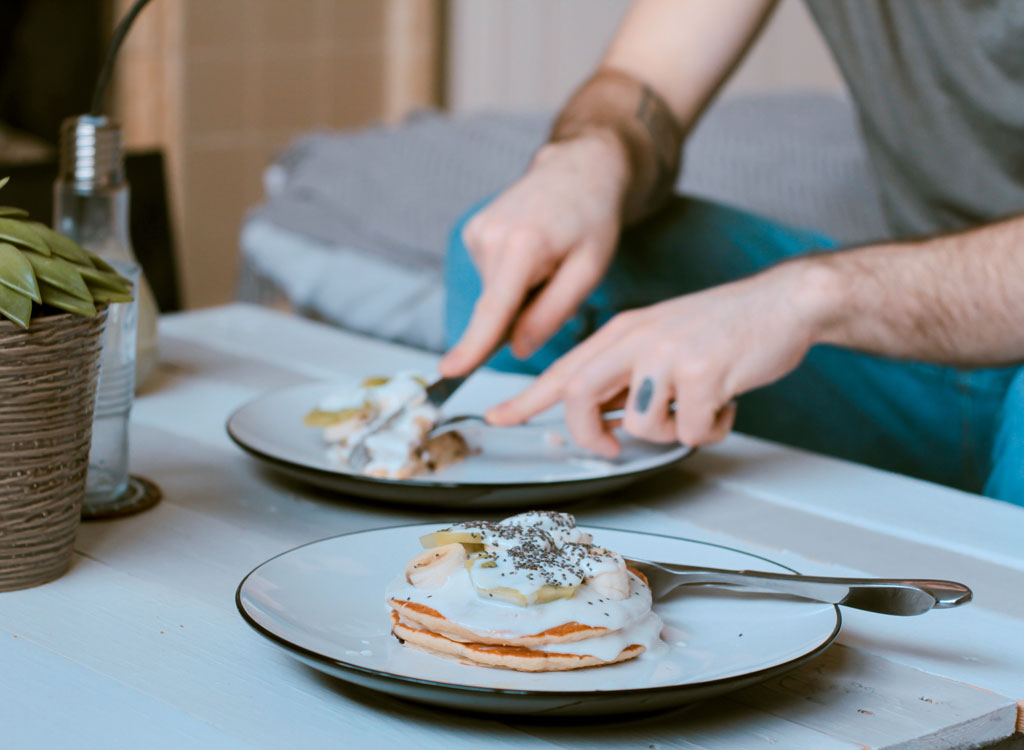
Or better yet, even longer. Our go-go-go lifestyle has affected our eating habits, leading folks to shovel down in their food between appointments. Unfortunately, these habits force us to ignore our bodies natural fullness cues.
Setting aside 30 minutes per meal in your calendar will help you to slow down. “When you eat slowly the gut and brain work together more efficiently to send chemicals and sensations that signal fullness,” says Richards. Eating slowly will help you to learn and be more mindful of your body’s fullness cues, which prevents overeating. Plus, “eating more slowly is thought to help with digestion, which can also improve weight loss,” she says.
Put your fork down between bites
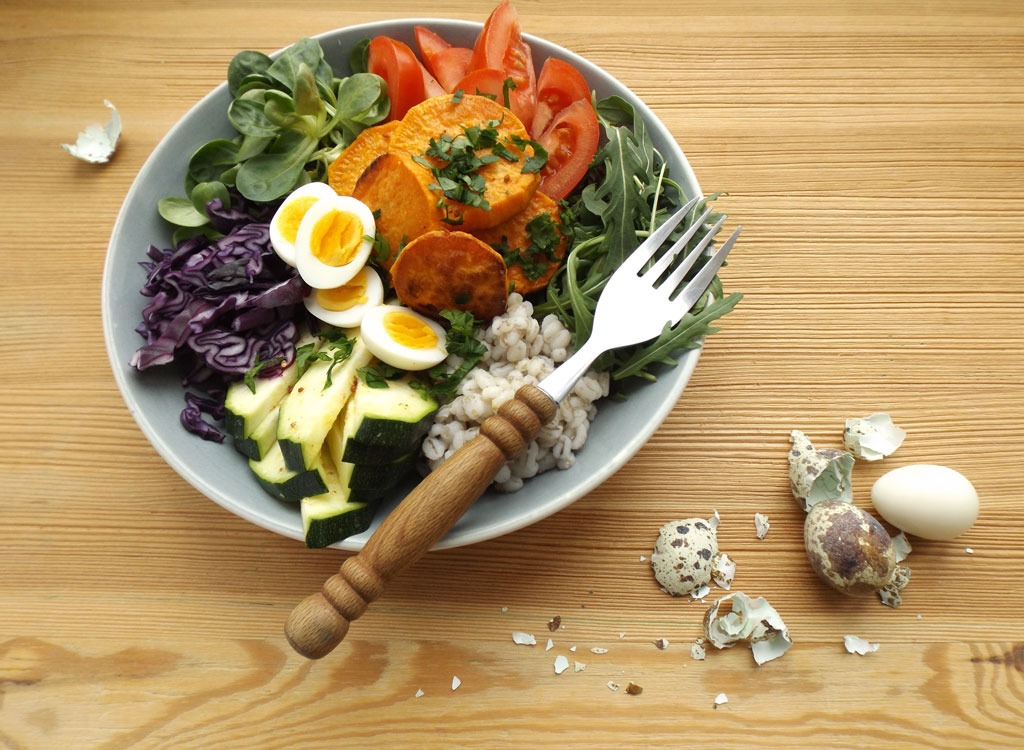
Go ahead and take that big ‘ole bite of your sandwich. But while you’re chewing, plop it back on the plate. And while you’re gnawing through that bite of salad? Lay your fork down. “This is a really good way to naturally slow your intake and put your brain and body in touch,” says Cording. Yes this will feel forced AF for the first two weeks or so. But, after that you’ll bite & drop without much thought. Trust.
Park further away at the grocery store

Quit weaving through the parking lot looking for a spot closest to the entrance! Instead, park as far away as possible. Really! As Dr. Axe explains, “People underestimate the difference walking more and getting more movement in their daily lives can make towards weight loss.”
P.S. If you’re feeling particularly strong, post-shopping, ditch the cart early and farmer’s carry the bags back to your car. *Flex emoji*.
Track your steps

Speaking of walking, that Garmin or FitBit really may be worth the investment. “I’ve had clients have a huge amount of success with step trackers,” Cording. Her hypothesis is that they instantly reward folks for doing seemingly-small things taking the stairs, walking around the house while on the phone, or going an extra block with Fido. “These extra blips of activity add up, helping burn slightly more calories per day,” she says. Here are some more Tips When You’re Walking for Weight Loss.
